West African clothes

West African clothes are uniques, fitting, colorful, and stylish. Not only economy and agricultural products but West Africa is also known for its great cultural values: ranging from festivals to ritual practices.
Bordered by the Atlantic Ocean to the west, the Guinea Coast to the south, and Lake Chad to the east, this defines West Africa’s territory on the African continent. With its members alphabetically: Benin, Burkina Faso, Cape Verde, Cote D’Ivoire, Gambia, Ghana, Guinea, Guinea-Bissau, Liberia, Mali, Mauritania, Niger, Nigeria, Senegal, Sierra Leone, and Togo are among the 16 nations that make up the region.
A brief history of West African clothes
West African clothes are inspired by its climate, geography, socio-political history, numerous ethnic groups, and their cultures, colonization, cultural interchange, and commerce with other areas, much as it is in other sub-regions of Africa.
Around 180,000 years ago, the first people of Africa started wearing clothing. They fashioned simple clothes like loincloths, wraps, belts, and other items out of animal skins, bones, and fur, using whatever resources and materials they could find in nature.
Given the continent’s relatively warm environment, people dressed up to express their age, social standing, and marital status rather than to defend themselves from the elements.
They perfected the method of creating clothing out of animal skin through time and became skilled leather craftsmen. Plant fibers were soon identified to be useful in the production of clothing and textiles. Raffia fabric, manufactured by weaving raffia palm fibers, was used in Central and West Africa, for example.
Techniques for dyeing were evolved throughout time. To give color and design to woven cloth, natural dyes derived from tree barks, leaves, flowers, rocks, and clay were utilized.
Trade’s Influence on West African clothes
Since ancient times, the various areas of Africa have traded with one another. However, throughout the 15th century, trade routes linking Africa, Europe, and Asia were established, and this had a significant effect on fashion at the time.
The locals were exposed to foreign things that had a lasting impression on them. Beads, for instance, were one of these items. They were used to construct full clothing items, such as beaded headbands, aprons, and cloaks, and to embellish them. Cotton, silk, and wool were also brought, and these, together with raffia, were the most common materials used to construct clothing.
Trade brought a kind of attire to West Africa in the 19th century that is being used today. This is a wax print fabric from Africa. Ankara cloth, kitenge, chitenge, and wax hollandaise are some of the names given to the fabric.
A huge piece of cotton fabric with vibrant colors and traditional African motifs is known as an African wax print cloth. The mechanical coloring process used in African wax print textile is developed from the Indonesian batik procedure.
Colors and patterns range from one culture to the next. The material is still used in the same way throughout the continent. It’s mostly used as a wrap, a headwrap, and a baby carrier. It may also be used as a towel or a bedsheet. It is now also used to fashion them into dresses, shirts, trousers, skirts, and other garments.
In Indonesia, where they had been trading since the 16th century, the Dutch learned about the batik coloring method. They returned to their hometown with some samples and sought to recreate them in order to mass-produce them at a lesser cost.
When they returned to Indonesia with these lower-quality textiles, they discovered that they couldn’t compete with genuine Indonesian batik. On the other hand, the imitations would not go to waste since Dutch merchants were aware of a need for printed cotton textiles in West Africa.
In the mid-nineteenth century, they brought fabric to their trade station in what is now Ghana, and cloth flourished. It also spread to other regions of the African continent from there. African wax print fabric has become a trademark of African fashion, and both men and women wear it regularly.
The most significant influence on clothes was colonization. European forces also colonized the West African states throughout the nineteenth century. Between the late 19th and early 20th centuries, residents were prohibited from wearing their traditional dress.
The rural populations wear traditional clothing on a regular basis. Otherwise, they are currently largely reserved for cultural events like weddings, funerals, and coming-of-age rituals in metropolitan areas. People are, however, gradually coming to terms with their traditional clothing and attempting to wear it more often outside of cultural events. Their clothing was nearly fully supplanted by western-style clothing, which is currently commonplace.
Let’s have a look at some unique textiles and clothes from a few West African nations now that we’ve looked at some of the most prevalent articles of clothing, learned about some of the variables that impact West African clothing, and seen how clothing has developed in West Africa through time.
Mali clothing styles
Because of the dry and hot environment, people in Mali did not wear many garments in the beginning. They would dress up in loincloths or tunics only for rituals and major gatherings. Between the 10th and 14th centuries, as Islam expanded, believers started to dress more modestly in order to comply with Islamic modesty requirements.
Boubou
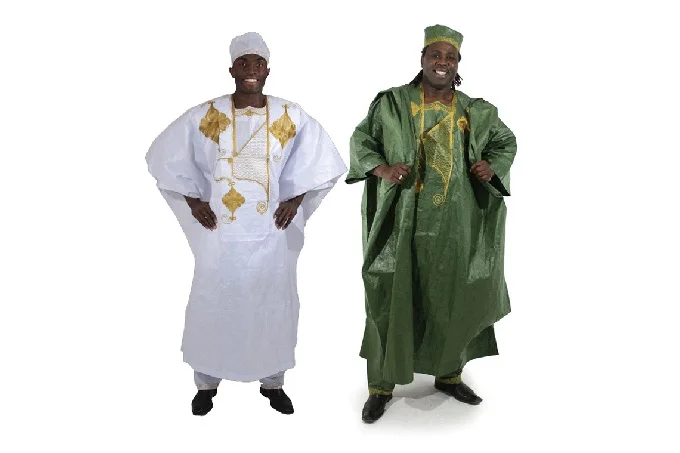
Mali is home to a variety of ethnic groups, each with its own unique dress. In Mali, however, there are several popular clothes worn by both men and women.
A boubou is a three- or four-piece uniform that includes a long-sleeved shirt that reaches the knees, a loose-fitting pair of pants that are knotted at the waist with drawstrings and tightened at the ankles, a cap, and the outer ankle-length robe that is the ensemble’s centerpiece. The robe includes a V-shaped neckline with embroidery and wide, open-stitched sleeves.
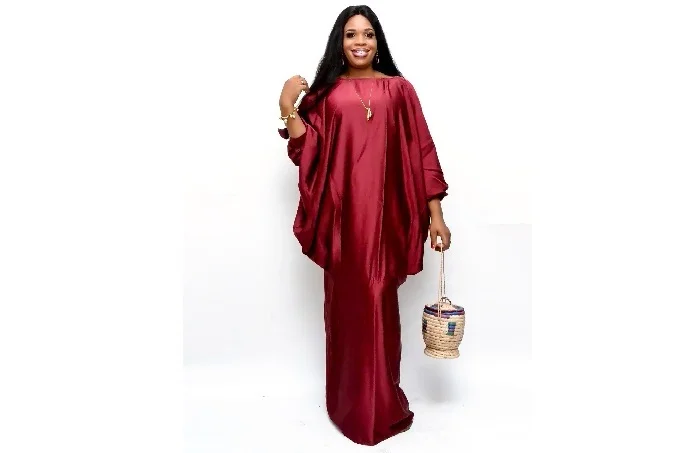
Other West African nations that wear the boubou include Senegal, Nigeria, Gambia, Guinea, and Mauritania. It’s also popular in various Central African nations. Males generally wear the boubou, however, women may now purchase boubous as well.
Boubou is traditionally produced using textiles that are uniquely Malian. The bazin is one, while Bogolan is the other. Bazin is a shiny, brightly colored cloth that is recognized for its gleam. The use of high-quality bazin clothing is limited to extremely rare events.
Bogolan
The bogolan, often known as mud cloth, is possibly Mali’s most well-known fabric. Bogolan is a Bambara word that means “comes from the soil.” Bogolan is a term that refers to both the cloth and the dyeing process. It is said to have been formed in the 12th century in the areas that are now Mali, a West African nation.
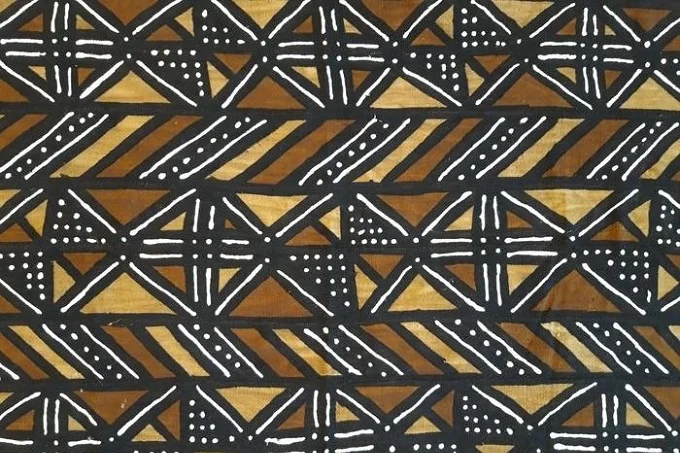
The mud cloth is a thick cotton fabric that has been colored using a traditional method. The fabric is colored in earth tones and incorporates culturally significant tribal designs. Traditionally, the Bogolan was exclusively worn by hunters, warriors, and healers.
This coloring technique’s actual origins are unclear. Some think the Dogon originated the method, while others believe a local legend devised it.
According to folklore, a lady who was sitting by the river at the time got dirt on her loincloth. She noticed the mud had permanently stained the material after failing to remove the stain. The dyeing procedure was allegedly discovered as a result of this.
How to make Bogolan clothing style
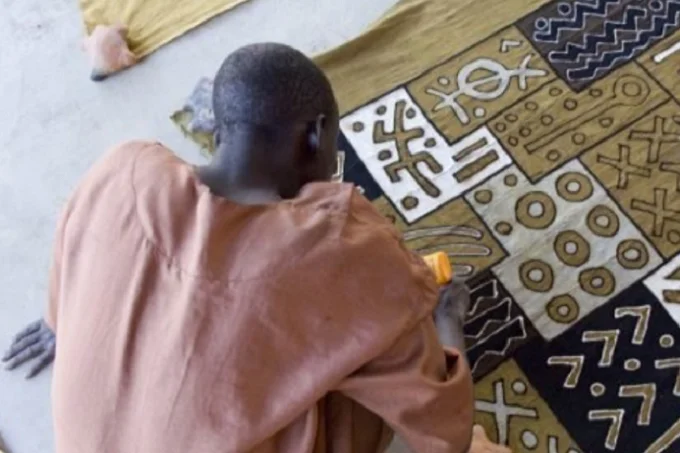
Making mud cloth is a time-consuming and difficult operation. It is typically made by women spinning white cotton, which is then woven into little squares and dyed by men.
To begin, thick handwoven cotton cloth must soak in a liquid prepared from brewing leaves and tree bark. The linen is cured in the sun before designs are painted on it using Bogo, a fermented mud paste.
The bogo takes about a year to ferment before it is ready to use. The dye’s durability is ensured through fermentation. Bogo uses earthy tones and dark colors in his work. The dye is bleached using a particular chlorine-containing soap to obtain lighter colors. Finally, the squares are stitched together to form a long cloth piece.
Motifs on the cloth signify whether the wearer has completed their coming-of-age ceremonies and their social, marital, and occupational standing. The designs are mostly geometric in character, and their colors contrast with the backdrop.
Bogolan cloth has become famous not just in Africa but also throughout the globe as a result of the efforts of Malian fashion designer Chris Seydou.
Mali’s traditional Women’s clothing
Skirts, blouses, long dresses, tunics, and wrap skirts are worn by women. Their ensembles are finished off with matching turbans on their heads. Bazin and Bogolan, as well as Pagne, are used to make women’s clothing. Pagne is a fabric that resembles African wax print cloth.
Ghana
When it comes to apparel, Ghana has a long history. People in Ghana have been weaving raffia fibers on looms for millennia. Ghana was an important trade empire from medieval times until the colonial period, and it was one of the first sites to weave textiles like cotton, silk, and wool. The kente cloth and the smock are now considered Ghana’s national attire.
Kente fabric and styles
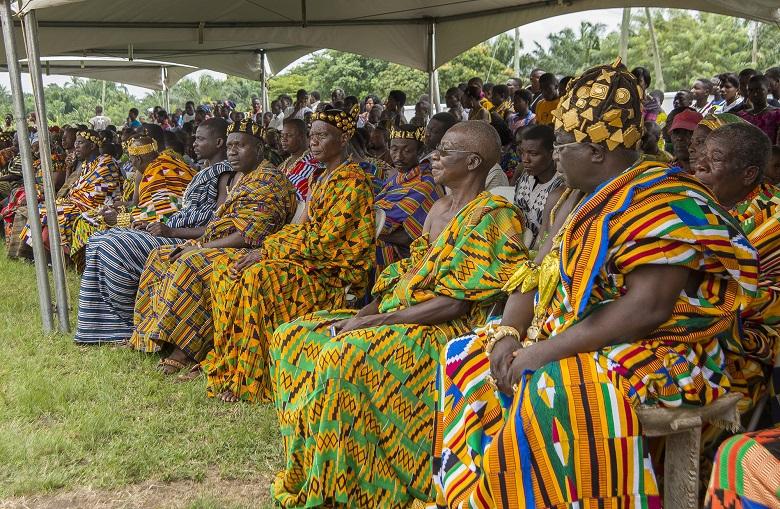
Kente fabric comes from Ghana’s southern area, notably the Ashanti region. It’s a long piece of fabric that’s generally made of silk, cotton, or both, and it’s known for its kaleidoscope of vibrant colors.
Kente was created roughly 400 years ago by the Akan people who lived in the southern Ghanaian territories. It’s unclear how the skill of producing kente came to be discovered. There is, however, a common narrative about its putative beginnings.
Two men, according to folklore, learned the technique of weaving by watching a spider weave its web. The intricate patterns and intricacy created by the spider astounded them. The spider, called Anansi, happily taught the men how to weave in exchange for certain favors.
Anansi is a well-known figure in Ghanaian mythology. He is often depicted as a cunning trickster who is continually trying to fool people. His tales function as children’s morality tales.
The guys returned to their hometown after learning the skill. As word of their abilities spread, Asantehene Osei Tutu, the first king of the Asante Kingdom, was presented with a piece of cloth. The checkered pattern of weaving reminded him of a basket, therefore he dubbed it kente, which means basket.
Only the monarch and priests wore kente during the period, and they only wore it on exceptional occasions. More kente fabric could be made as a result of trade improvements in weaving and looms, and the general public was finally authorized to wear the cloth. Despite the fact that it is now available to everyone, it remains a sign of money, position, and elegance.
Patterns, Colors, and Importance of Kente
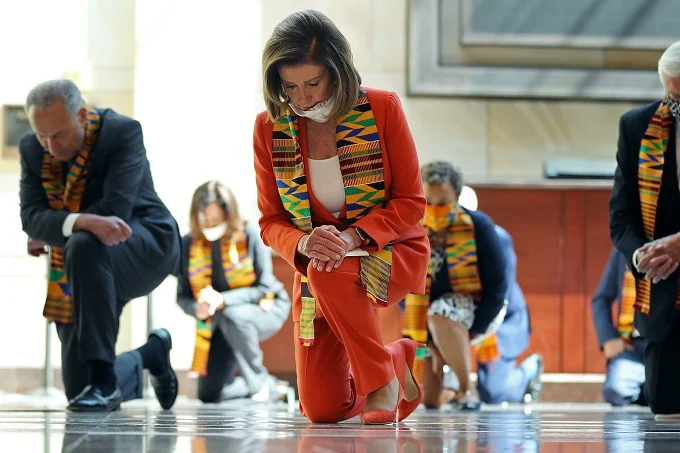
Each kente design has its own name. Interestingly, the men who weave the patterns typically assign these names. The weavers come up with the term in their dreams or while deep in thinking. This is why kentes are often associated with the spiritual realm.
Alternatively, community elders or tribe leaders may invent a name based on popular cultures, such as in honor of a celebrity or a current event.
Kentes are also recognized for their vibrant colors. The colors, on the other hand, aren’t chosen at random. On a traditional kente, each color has cultural significance. Yellow, for example, is a symbol of sanctity, gold is a symbol of wealth and royalty, and red is a symbol of blood and spirituality; blue is a symbol of the sky, love, peace, prosperity, and unity; green is a symbol of nature and good health; purple is a symbol of healing and femininity; and white is a symbol of purity, healing, and the clay used for rituals and ceremonies. These are only a few of the most common kente color combinations.
The kente is worn by both men and women in Ghana. However, everyone drapes the material in its own unique manner. Men often wear just one article of clothing. They wrap the remainder of the cloth around their body like a Roman toga by swinging one corner over one of their shoulders.
Some opt to wear a shirt beneath, while others like to expose their chests. Women wear kente in a variety of styles, and they sometimes combine two or even three pieces at once. They may put on a blouse or shirt and wrap the kente around their waist like a skirt, then wrap another piece of kente over their shoulders like a shawl.
Alternatively, they may wrap the kente around their bodies and then utilize other portions as a shawl or cloak. The pattern and length of the kente a person may wear are determined by their social rank, age, and marital status.
Traditionally, the kente was not meant to be cut, but nowadays, exactly like African wax print fabric, it’s fitted into dresses, shirts, and pants. Ghanaians now take great delight in this piece of cultural history.
Fugu or smock dressing style
Smock, also called fugu or batakari in Ghana, is a long shirt worn by men and boys in northern Ghana. Today, however, it is widely worn throughout the country, to the point that it has been designated as a national dress owing to its widespread use and popularity. It’s worth noting that the smock is also Burkina Faso’s national attire.

The Mossi people of Burkina Faso and the Hausa people of Nigeria were the first to adopt it. Many years ago, a population of both ethnic groups arrived in Ghana.
A smock is a loose-fitting outer shirt with broad 34-inch or half-inch sleeves that reach the wearer’s waist. Its comfortable fit and abundant ventilation make it a great garment to wear in the hot Ghanaian environment.
The smock’s neckline may be embroidered, and it may be embellished with beads on occasion. Fugu is paired with a plain shirt and a pair of khaki slacks. A kufi hat, a round, flat-top, brimless cap worn on the head, completes the ensemble.
Fugu is still popular in both rural and urban settings. In fact, several local officials wear it on a regular basis. They just paint their fugu to match their political party’s colors. It’s also a popular choice for weddings and funerals.
Gonja clothing style
Traditionally, fugu is fashioned of gonja, a unique cloth. Gonja is a thick cotton fabric said to have originated with the Gonja people of northern Ghana.
The Gonja people have long been recognized for their remarkable weaving skills, and they refined weaving techniques to create this cloth throughout time. Cotton balls are hand-picked and treated before being used to manufacture Gonja.
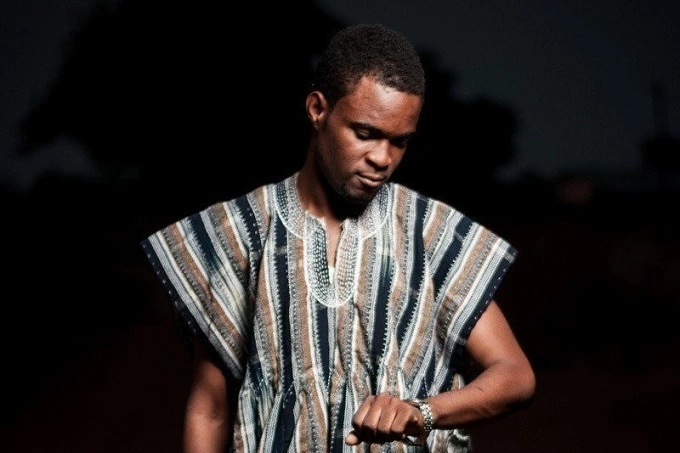
A spindle is used to transform raw cotton into thread. The threads are then colored using colors derived from natural sources. Colorful vertical strips of cotton cloth are then stitched together to make a larger piece of fabric, yielding a sturdy and thick material.
Women wear long skirts with blouses or long dresses made of African wax print fabric for more relaxed occasions. To finish the look, they drape a similar fabric over their heads.
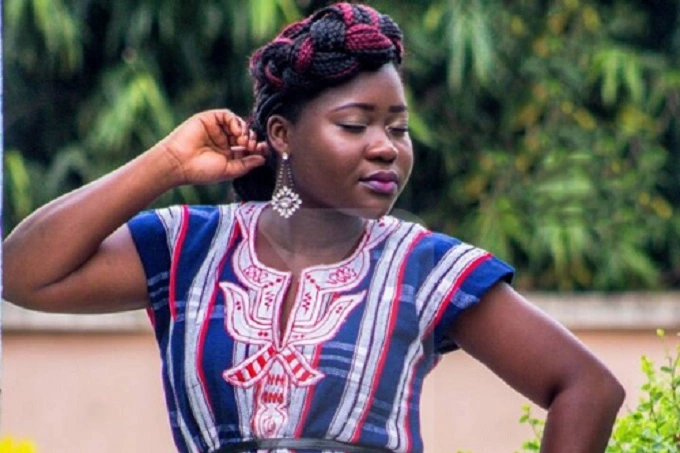
In this, we looked at the development of clothes in West Africa in general. Then we learned about the factors that influence the nature of Western African traditional clothing. We also uncovered other prevalent clothing and fabric kinds in the area, including African wax print cloth, Pagne, and raffia cloth.
Nigerian clothing styles
Nigeria is one of the West African nations noted for its excellent fashion sense. Every year, a new approach is created that is both original and intriguing. Nigerians like dressing in traditional Nigerian fashion and flair. If they don’t go for the whole traditional appearance, they at least include one cultural aspect in their ensemble. This include Igbo, Hausa, Yoruba, and others.
Yoruba clothing styles

Every tribe in Nigeria has its traditional clothing that emphasizes its own identity. The Yoruba people are no different. Aso ibile is the Yoruba term for traditional clothing. Because the clothing styles of men and women in Yoruba vary, they never wear each other’s garments.

Yoruba people used to use woven fabric before European influence influenced African culture. They may now employ a range of fabrics, including lace, guinea brocade, ankras, linens, adire, and batiks. People may readily be seen dressed in Yoruba traditional attire as well as in European style, such as a suit and tie. Therefore, it should come as no surprise that contemporary Yorubas dress in shorts, shirts, trousers and skirts, blouses, and suits.
Buba, esiki, and sapara are traditional Yoruba male native styles. All of these undergarments are worn with overgarments such as dandogo, agbada, gbariye, and sulia. Men’s pants in Yoruba attire are known as kembe, gbanu, sooro, kamu, and sokoto elemu. Without the hat, it’s difficult to picture yoruba native style for males. Gobi, tinko, abeti-aja, alagbaa, oribi, bentigoo, onide, and labankada are some of the names.
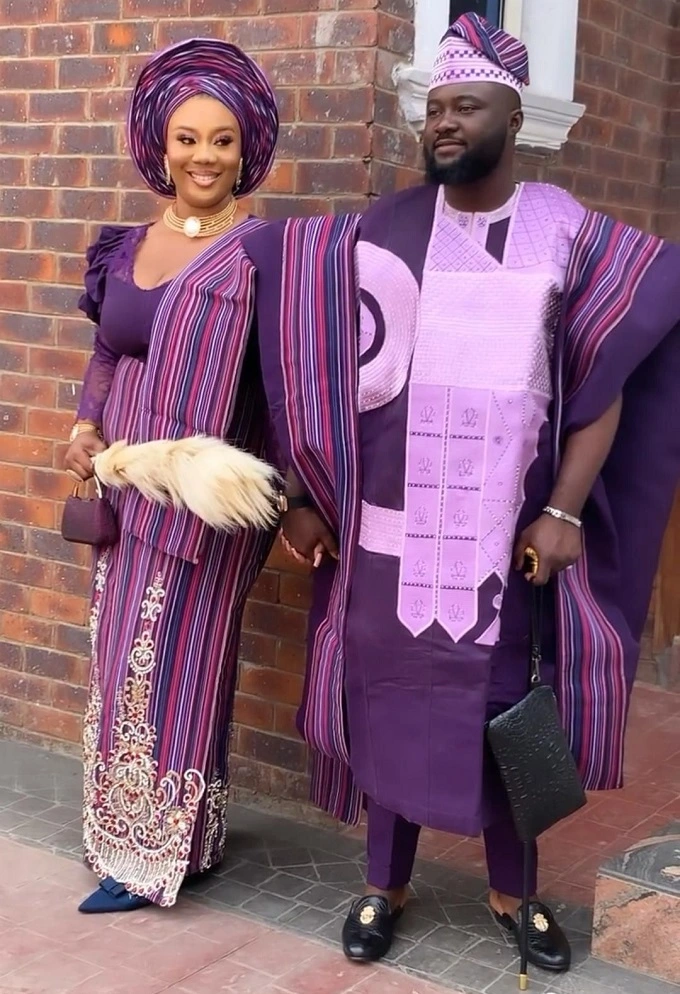
Iro and buba, which are comparable to blouses, are worn by women. Headwear is an element of women’s clothing, just as it is in men’s yoruba native dress. As a result, they put on gele. However, it is important to note that gele is not required, and a woman’s head may be left uncovered.
Hausa clothing styles
The Hausa tribe has a long and rich heritage, reflected in their clothing. Have you ever seen the Hausa in their traditional garb? Some of these clothes are created in such a manner that you may reconsider wearing them.

These costumes will suit you whether you’re heading to an event or just want to enjoy a quiet evening with your sweetheart. The contemporary touch that is incorporated in their design will astound you. Ladies, Hausa clothing, may be used to update your wardrobe.
These traditional clothes are timeless and come in a variety of colors and patterns. From Ankara gown designs to lace, you may create a stunning ensemble that will draw attention to you. If you look at some of the Hausa clothes, you’ll see that they come in a variety of vibrant hues. There are several styles to pick from when it comes to Hausa clothing.
Igbo clothing styles
When it comes to West African clothes, the Igbo tribe, one of Nigeria’s most numerous and influential tribes, is recognized for its rich cultural legacy, which is represented and celebrated by indigenes in their daily lives. Their traditional Igbo dress for men and women is one of the essential aspects of their social lives. We’ve compiled a collection of the greatest and most beautiful Igbo traditional clothes.

We discovered that commerce and colonialism had the greatest impact on historical design, and that they have influenced the character of ethnic apparel in West Africa today.
Following that, we looked at some traditional attire from Mali, Ghana Nigeria, and discovered that many of these outfits are shared by West African nations. The distinction lies in the ideology behind them and the colors, patterns, and ways of wearing them.




